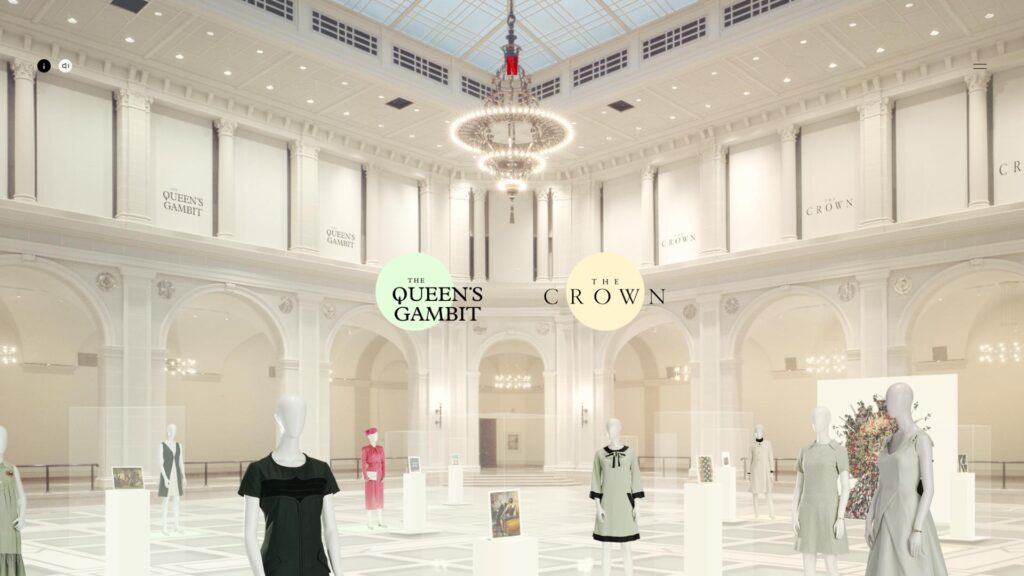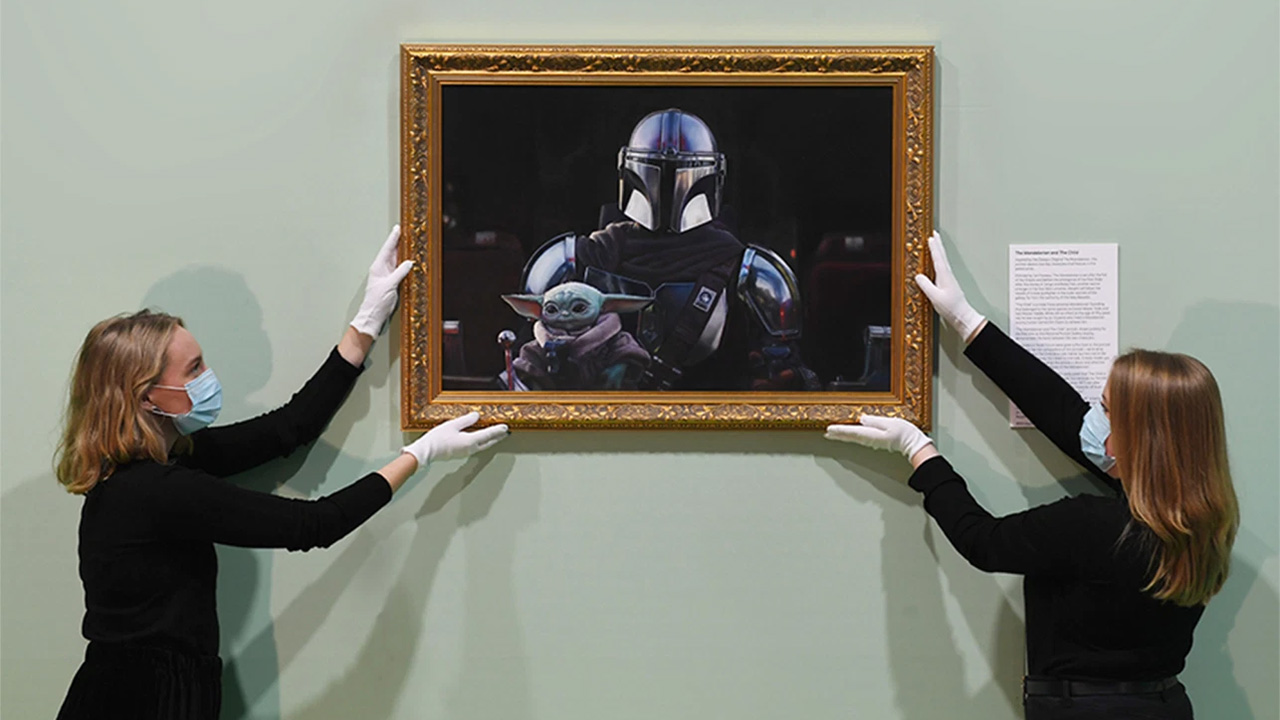Mention the names of Takashi Murakami or KAWS to Millennial or Gen Z netizens and they will likely picture the celebrity homes of Kanye West, Drake, or Justin Bieber, which have gone viral for housing the works of these pop masters, or the artists’ best-selling collaborations with hyped streetwear label Supreme. Recent years have seen mainstream pop culture intertwine with the art world — and a number of cultural institutions have welcomed this integration with sponsored exhibitions over the past year.
October 2020 saw Netflix partner with Brooklyn Museum to virtually exhibit costumes from the streamer’s hit shows The Queen’s Gambit and The Crown. Later that month, London’s National Portrait Gallery collaborated with Disney Plus+ for a pop-up display to promote the second season premiere of The Mandalorian, where a portrait of the internet’s beloved Baby Yoda, otherwise known as Grogu or The Child, took centerstage.
In another marketing-led venture, in November 2020, the Los Angeles County Museum of Art (LACMA) unveiled an art installation by Alex Prager titled “Holiday Party” that saw 15 life-sized figures precisely arranged to simulate (and satirize) the mundane nostalgia of office parties. Sponsored by Miller Lite, the exhibition also featured in the brewer’s “Farewell, Work Holiday Parties” campaign.
As lockdown restrictions have blitzed museums, leaving them with little-to-no footfall and forcing a diversification of revenue streams, cross-industry partnerships have arrived as go-to solutions for cash-strapped institutions. But are these sponsored collaborations a necessity following the pandemic’s financially devastating impact, or simply a part of the museum sector’s ongoing efforts to modernize and retain cultural relevance?
Jing Culture & Commerce spoke to Athena Chen, Insight Strategist at leading trend forecasting company WGSN, to explore these commercial pairings, and how they serve both the art and pop spheres.
Behind-the-scenes exposure
In March 2021, London’s Victoria & Albert Museum is set to launch Alice in Wonderland: Curiouser and Curiouser, an exhibition that charts the literary character’s many adventures and adaptations on stages, screens, and runways. It’s a show that typifies the additional cultural capital a museum can bring to film and television endeavors, offering a platform for behind-the-scenes storytelling.
“The magic of moments in television or film is in details such as the props and costumes that bring them to life, but many of the objects from the set ended up in private collections or stored away by the studios,” says Chen. “A new generation of younger audiences are deeply interested in the creative process, and it makes sense to sponsor museum exhibitions and collaborations as they are able to showcase the creative process in detail.”

Created in partnership with Netflix, the Brooklyn Museum’s virtual exhibition, The Queen and The Crown, presented interactive 360-degree digital renderings of the shows’ costumes. Image: Brooklyn Museum
Entertainment as cultural product
In turn, the pop appeal and social media-readiness of entertainment-focused exhibits taps on existing fanbases and expands the museum audience. A show of portraits depicting Star Wars characters, after all, is bound to draw on a massive well of film, comic book, and television fans — just as it may slot neatly into a cultural institution’s programming. As Chen notes, “The entertainment industry itself is a cultural product. It can be seen as an assembly of different art and craft practices. The entertainment industry — whether movies or television — is about people, and arts and design plays a pivotal role in bringing stories to life.”
And as Miller Lite and Netflix’s sponsored exhibitions reveal, advertising is likewise finding its footing within the museum. While contributing financially to an institution, sponsors and advertisers might also find their products and services landing within new contexts and gaining fresh cultural currency.
Maintaining relevance with younger generations
Above all, collaborating with dominant pop cultural players assist cultural institutions with the tricky task of staying relevant. Whether by expanding a museum’s offerings, garnering likes on social media, or generating virality, cross-industry partnerships and sponsored exhibitions foreground a cultural institution’s name in pop awareness, and ultimately, help lure a new crop of visitors through their doors.
“As social and technological contexts have been changing at breakneck speed while creating new cultural contexts, pop culture has been able to quickly capture the zeitgeist,” says Chen. “Cultural institutions need to tap into that to stay relevant to a new generation of audiences.”



